VIDEOS
Memories for Life
posts
Instagram Images
REVIEWS
What our Clients Say About Us
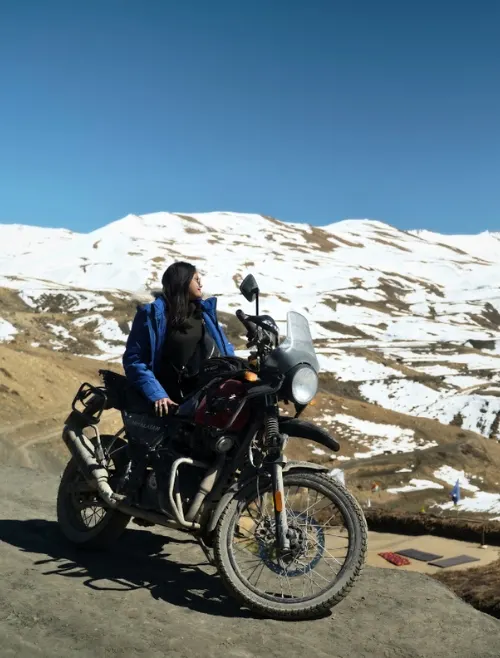
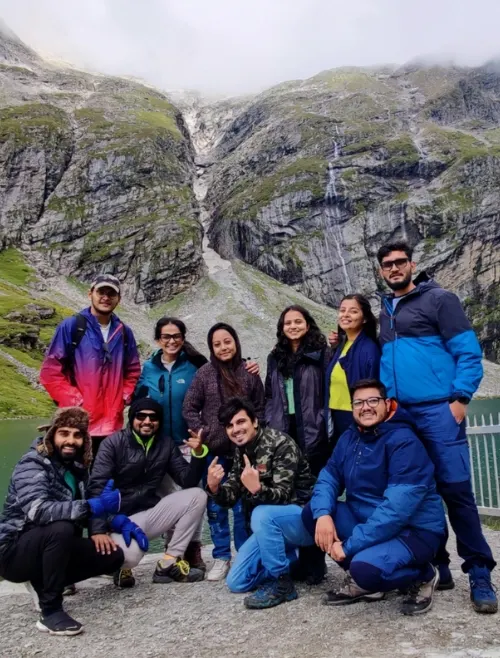
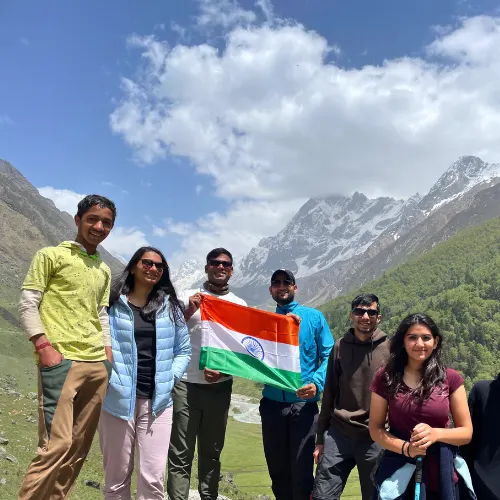
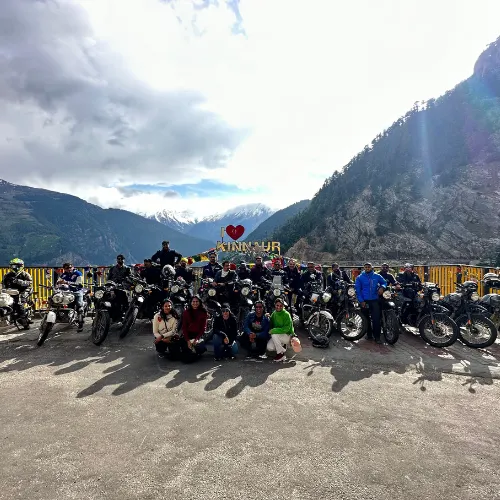
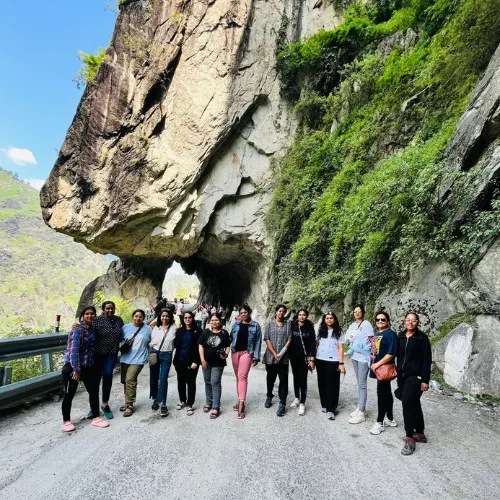
The journey into yourself is the greatest adventure of all.
And JustWravel, with a decade of experience, makes sure that you are traveling with the best people, with the best amenities, to experience the world unknown to you, a journey that will help you find yourself.
JustWravel, India’s most trusted and safest travel community, was established a decade ago with the sole aim of narrowing down the gap between travelers and their travel dreams.
When JustWravel organized its first trip, we had the opportunity to turn people’s dreams into reality. From then till now, JustWravel, through its day-and-night efforts, has been organizing trips that change the lives of travelers and gift them lifelong memories.
Over the years, we have created India’s most versatile travel community, WravelerForLife. By uniting like-minded travelers, JustWravel takes pride in having served the diverse needs of travel enthusiasts.
We have fulfilled the travel cravings of 80,000+ Wravelers, completed over 10,000 successful trips, and made 50+ destinations accessible. With 10,000+ reviews (Google + TripAdvisor), we have set a benchmark for ourselves. From Weekend Getaways, Himalayan Treks, Backpacking Adventures, Biking Trips, International Group Tours, Domestic Customized Trips, Customized International Trips, Corporate Outings, and School Tours, we have got everything you need! Our simple mantra: Don’t just travel - JustWravel.
With consistent support and encouragement from our Wravelers, JustWravel has emerged as a trailblazer in curating remarkable experiences for adventure seekers and wanderlust-driven souls.
As an ATOAI (Adventure Tour Operators Association of India) registered community, safety is our top priority. Our trip leaders are not just adventurers but certified experts, holding BMC & AMC certifications and equipped with first-aid training. We ensure that every journey with us is both thrilling and secure.
Being the first travel community to provide free travel insurance for adventure activities up to ₹4.5 lakhs, free riding jackets for biking trips, and launching a sustainable initiative called Keep The Trails Alive - JustWravel has always gone the extra mile.
Our constant dedication and hard work have helped us earn many milestones:
- Incubated by IIM Bangalore | NSRCEL
- A proud member of Uttar Pradesh Tourism, recognized as an Adventure Tour Operator
- Recognized Tour Operator by West Bengal Tourism
- Supported by Google For Startups
- Winner of TripAdvisor’s Travelers’ Choice Award in 2020, 2023, and 2024
- Four-time recipient of the MSME Best Enterprise (Travel & Tourism) Award
- Awarded Best Adventure Tour Operator by The Economic Times
- Featured on Business Standard and ANI
We are not just another travel agency you’ll find in the market; we are a community of passionate explorers dedicated to crafting the ultimate travel experiences for you. All the milestones we have achieved are the result of constant support and positive feedback from our travelers.
From the very beginning till today, everything JustWravel has worked for is the community, the divine places we witness, and the passion for travel.
Don’t think you need another reason to choose us?
80000+
Happy Wravelers
50+
Group Tours
250+
Customized Tours
Corporate Trips
and School Tours
Hand-picked
Itineraries
10000+
Reviews
blogs
Our Blogs
FAQ
Have any Doubts
What is Spiti Valley famous for?
Spiti Valley is a cold desert mountain nestled in the north-eastern region of Himachal Pradesh. The name Spiti itself transalates to "the middle land". Spiti is renowed as the winter wonderland because during winters the entire valley gets covered in a thick blanket of snow. It's known for it's ancient monasteries, rich tibetan culture, pristine rivers and warm hospitality.
How to reach Spiti Valley?
Spiti Valley is located in the Lahaul district of the state of Himachal. There are two routes to reach Spiti Valley by road. One is via Manali while the other is via Shimla.
The Shimla route passes via Kinnaur Valley and you get to traverse the Hindustan Tibet Highway. The gradual ascend towards high altitude makes it easier for your body to get acclimatized as well. The distance from Shimla to Kaza is approx 225 Kilometers and it takes almost 9 hours for you to reach including the pit stops you might make while driving.
On the other hand, Most people prefer going on a road trip to Spiti Valley from Manali as the route is shorter and also gives ample opportunity for adventure. The distance between Manali and Kaza is approximately 200 Kilometers. The roads are tough to drive upon especially when you’re headed towards Kunzum Pass, and the water crossings make conditions even tougher, but the journey becomes ten times better when you are traveling to Spiti Valley from the Manali route, not to mention that even though the roads are extremely hostile, they are less susceptible to landslides, and the entire journey is less time-consuming.
Explore More: Plan A Roadtrip To Spiti Valley
How many days do I need to explore Spiti Valley?
Spiti Valley has a lot to offer and if you want to make the most out of your backpacking trip to Spiti, then you need an 8-9 day itinerary at least. If we include the time it takes for you to reach your destination i.e. Spiti Valley in this case. If you are going to Spiti via the Kinnaur side, it will take you at least three days to reach Spiti. And if you travel to Spiti Valley through the Manali route, it will take you two days to reach Spiti. Any road trip to Spiti that isn't at least 8 days long doesn't do it justice. There aren't enough days that you can spend here but a 9-day trip to Spiti Valley should give you the taste of the adventure and peace it has to offer.
Follow This: Spiti Valley Road Trip Itinerary
How do I plan a trip to Spiti Valley?
When planning a trip to Spiti Valley, you need to come up with a number when it comes to how many days you can afford to spend in Spiti Valley. Then which starting point is convenient for you and then you just have to give us a call and let us take over the responsibility for you. We have curated different itineraries that are suitable for a wide range of people and cover most of the major attractions of Spiti Valley.
What is the best time to visit Spiti Valley?
The best time to Spiti Valley entirely depends on what your definition of fun and good times is. If you love snow and all things winter, putting your freezing hands around a piping hot cup of tea, or prefer ivory snow to earthly hues, then you would love Spiti Valley in winter. It is called the winter wonderland because of the thick blanket of snow that covers the entire valley, from the mountains to the meadows. The best time to visit Spiti Valley would be from February to May if you want to experience the true glory of Spiti. If you are someone who loves nature, lakes, and green fields, then the best time to visit Spiti Valley is from June to September. You'd be able to visit the Chandratal lake, see the Himalayan sheep grazing in the meadows, and soak in the sun as well.
Is it possible to go to Spiti in December?
Although Spiti Valley is paradise personified during winters, it's crucial to know that most of the motorable passes get closed due to heavy snowfall. The Manali route gets completely shuts down. The route via Shimla is open throughout but it's important to know that the roads are slippery hence caution is needed. The temperature drops below zero degrees. Since the network is scarce and the last ATM is in Kaza (which runs out of cash often), you must be fully prepared for a winter Spiti trip. However, December is not the ideal month for a backpacking trip to Spiti Valley because it's extremely dangerous and you won't have resources at your disposal either.
Know Why: 5 Reasons Not To Visit Winter Spiti
What are the best places in Spiti Valley?
Spiti is a treasure chest with many hidden gems in its embrace. The best places in Spiti Valley that you can't miss are:
1. Chitkul: The last Indian Village with the cleanest air in the entire country. This tiny hamlet is quite literally a breath of fresh air.
2. Kalpa: With a breathtaking view of the Kinner Kailash peaks, apple orchards, serenity, and the suicide point that gets your heart beating faster, Kalpa is one of the places you simply can't miss while on a trip to Spiti Valley.
3. Khab: The confluence of the Spiti and Outlet form a commune in the heart of Khab with the Reo Purgyil in the backdrop forming a landscape that looks like a dream.
4. Nako: A quaint village, Nako with the serene Nako Lake and Nako monastery is the embodiment of peace.
5. Pin Valley: Famous for its wildlife reserve, diverse flora, and fauna, and lush green forests, Pin Valley is a nature lover's paradise.
6. Kaza: The commercial center of Spiti, Kaza is the bridge that links Spiti to its neighboring valleys and gives you a glimpse at the Spiti which is a blend of both modern and traditional customs.
7. Langza: The village of Gods, Langza is known for the abundance of fossils that are found here. The main attraction is the 1000-year-old Buddha statue that overlooks the village as its watchful protector.
8. Komic: The world's highest village nestles in Spiti Valley. It is a remote hamlet with less population and an abundance of Spiti.
9. Kibber: Although inhabited by humans, you can still see this village's rare snow leopard, and the view is truly breathtaking.
10. Spiti Monasteries: Spiti has no shortage of quaint villages but what's known, especially for is because of the centuries-old monasteries with their thangka paintings, murals, and relics of Buddha. Some of the most popular monasteries that you must see in Spiti Valley are Tabo Monastery, Key Monastery, Kungri Monastery, Gue Monastery, Nako Monastery, Sakya Tangyud Monastery, and Dhankar Monastery. We make sure to cover all of these in our itineraries.
Know More: Offbeat Places To Visit in Spiti Valley
Is it difficult to find ATMs in Spiti Valley?
Because of its location in the Himalayan regions, there is a scarcity of ATMs in Spiti. That is not to say that there aren't any working ATMs in the valley but during winters, it can be hard to refill the cash and there is no resort if there is a power outrage. With that being said, the town of Reckong Peo has 7-8 ATMs. There is an ATM in Sangla and one in Kalpa. Beyond Kalpa is the most non-functional ATM at Tabo. There is also an ATM at Kaza that works efficiently but does face issues of running out of cash sometimes. Beyond Kaza, the next one is at Manali.
Is there mobile network available in Spiti Valley?
The connectivity for mobile networks depends on a lot of factors, like the weather conditions, high altitude, hotspot regions, etc but still, there are a lot of places in Spiti that get decent mobile connections for Jio and BSNL. Chitkul gets volatile network coverage while Kalpa and Kaza have a decent network for Jio users. There is almost zero networks at Chadrataal.
What kind of clothes should I pack if I'm going to Spiti during winters?
The temperature in Spiti can drop below -3 degrees during winter so you need to pack lots of warm clothes and layers. Thermal inners, fleece jackets, woolen jackets, fleece or woolen socks and gloves, Insulated shoes, and Balaclavas to cover your head, especially your ears and neck against chilly winds. We share an extensive list of things that you need to pack according to your trip to Spiti Valley so you can follow that packing list to help you pack better.
Description
Ultimate Backpacking Trips
Traveling to Spiti
Cradled in the rugged folds of Himachal Pradesh, Spiti is more than just a destination—it’s a whole different dimension. Perched high in the Himalayas, this cold desert valley paints its canvas with ancient monasteries, dramatic gorges, and moonlike landscapes that stretch beyond the horizon. With our Spiti backpacking trip, you’ll trace mountain roads flanked by snow walls, wander through remote hamlets like Langza and Komic, and share tea with monks at Key Monastery. It’s raw, it’s remote, and it rewires the way you travel.
Our Spiti group tour packages are perfect for solo travelers, adventure seekers, and anyone craving connection in the mountains. Led by our experienced Trip Captains, the journey brings together shared rides, group bonfires, and the unmatched thrill of riding through some of India’s highest motorable passes. From postcard-perfect sunrises in Dhankar to stargazing nights in Tabo, this is slow travel wrapped in Spiti’s silence and soul.
Winter Spiti
Spiti in winters? It’s a snow globe dream. Imagine a landscape dusted in fresh powder, ancient monasteries veiled in silence, and roads that test the spirit of adventure. Winter Spiti is not for the faint-hearted—it’s for the wild souls who don’t mind a little frostbite in exchange for untouched beauty. If you're joining our Spiti backpacking trip during winter, expect frozen rivers, secluded stays in Kaza, and the magic of whitewashed vistas that seem straight out of a painting. It's also one of the rare seasons when you can spot snow leopards and blue sheep if you're lucky. Our Spiti group tour packages for winter ensure warmth, comfort, and camaraderie even when the temperature dips below -20°C.
Why brave the cold?
- Lesser crowds = pure solitude
- Authentic homestay experiences with local families
- Snow hikes and frozen waterfalls
- Stories shared over endless cups of butter tea
Best Time to Visit Spiti
Spiti wears a different charm with every season. Here’s how to time your visit:
Peak Season:
Months: June to September (Summer)
What to Expect: Open roads, vibrant landscapes, and perfect riding weather.
What You’ll Love: Chandratal camping, high-altitude treks, and village hopping
Shoulder Season:
Months: April to May, October
What to Expect: Fewer tourists, crisp air, and blooming valleys or golden-brown terrains
What You’ll Love: Offbeat experiences, great light for photography, and quieter monasteries
Off Season:
Months: November to March (Winter Spiti)
What to Expect: Extreme cold, blocked high passes, and isolated stays
What You’ll Love: Snow-covered roads, traditional winter life in Spiti, and unbeatable serenity
Nearby Spiti Destinations
Make your Spiti backpacking trip even more memorable with these detours:
- Kinnaur Valley: Apple orchards, wooden temples, and scenic rivers
- Manali: Ideal start or end point for the Spiti circuit
- Chitkul: India’s last village near the Indo-Tibet border
- Kalpa: Known for views of Kinnaur Kailash range
Read: Offbeat Places to Visit in Spiti
How to Reach Spiti
Reaching Spiti is part of the adventure.
Option 1: Via Manali
- Best for: Adrenaline seekers and experienced travelers
- Route: Manali → Rohtang Pass → Kunzum Pass → Kaza
- Tip: This route is open only from June to October
Option 2: Via Shimla (All-Season Route)
- Best for: Winter travelers and beginners
- Route: Shimla → Reckong Peo → Nako → Tabo → Kaza
- Tip: Preferred route for Spiti group tour packages in winter
Transport: Tempo Travelers, SUVs, and local HRTC buses available
Permits: Indian nationals don’t need permits; foreigners require an Inner Line Permit for certain areas
Read: How to Reach Winter Spiti
Top Things to Do in Spiti
Whether it’s spiritual stillness or extreme terrain that you crave, here’s what our Spiti backpacking trip includes:
- Visit Key Monastery: Iconic hilltop gompa with panoramic views
- Explore Komic & Hikkim: World’s highest post office and one of the highest villages
- Camp at Chandratal Lake: A shimmering crescent under the stars
- Trek to Dhankar Lake: Hidden jewel with surreal beauty
- See Fossils in Langza: Go fossil hunting in a village that feels like Mars
- Witness the Pin Valley: Stark contrast of greens and browns, tucked within snowy peaks
- Attend Local Rituals: Experience Spitian festivals and monastery chants
Must-Try Foods in Spiti
Food here is as grounding as the place. Try these traditional dishes:
- Thukpa: Soul-soothing noodle soup
- Tingmo: Steamed bread served with curry or dal
- Churpe: Dried yak cheese—an acquired taste
- Butter Tea: Salty, pinkish, and served warm
- Momos & Buckwheat Roti: Locally grown and cooked with love
Why Choose JustWravel for Your Spiti Tour Package
We don’t just take you to Spiti—we take you through it.
- Coolest Trip Captains: Our AMC-certified Trip Leads embody the motto ‘From the mountains, Of the mountains, and For the mountains.’ They possess in-depth knowledge of the trails and local culture, ensuring a safe and enriching experience.
- Biggest On-Ground Operations Team: With a robust team of over 100 individuals providing 24-hour local support, we guarantee you have access to the latest information about roads and destinations before you embark on your journey.
- Handpicked Itineraries: Each itinerary is meticulously researched and curated to match your vacation dreams, ensuring you visit the best locations and offbeat spots within your time frame.
- Delectable Food: Whether you’re trekking through mountains or exploring hidden gems, you’ll enjoy top-notch cuisine that combines nutrition and scrumptious flavors, enhancing your travel experience.
- Comfortable Stay and Secure Transportation: We prioritize your comfort and safety, providing reliable accommodations and transportation throughout your journey.
- 9 Years of Experience in Northeast: With over nine years of expertise in organizing trips to Northeast India, we understand the nuances of the region, ensuring a smooth and enjoyable travel experience.
- The Perfect Mixture of Adventure, Fun, and Self-Discovery: Our trips are designed to offer a blend of thrilling adventures and opportunities for personal growth, making your journey not just a vacation but a transformative experience.


Newsletter
Be the first one to know all about the Exciting Offers, Travel Updates and more.

B-42, 2nd Floor, Tower- B, The Corenthum, Block A, Sector 62, Noida, Uttar Pradesh 201301
© 2015-2025 JustWravel Pvt. Ltd.












